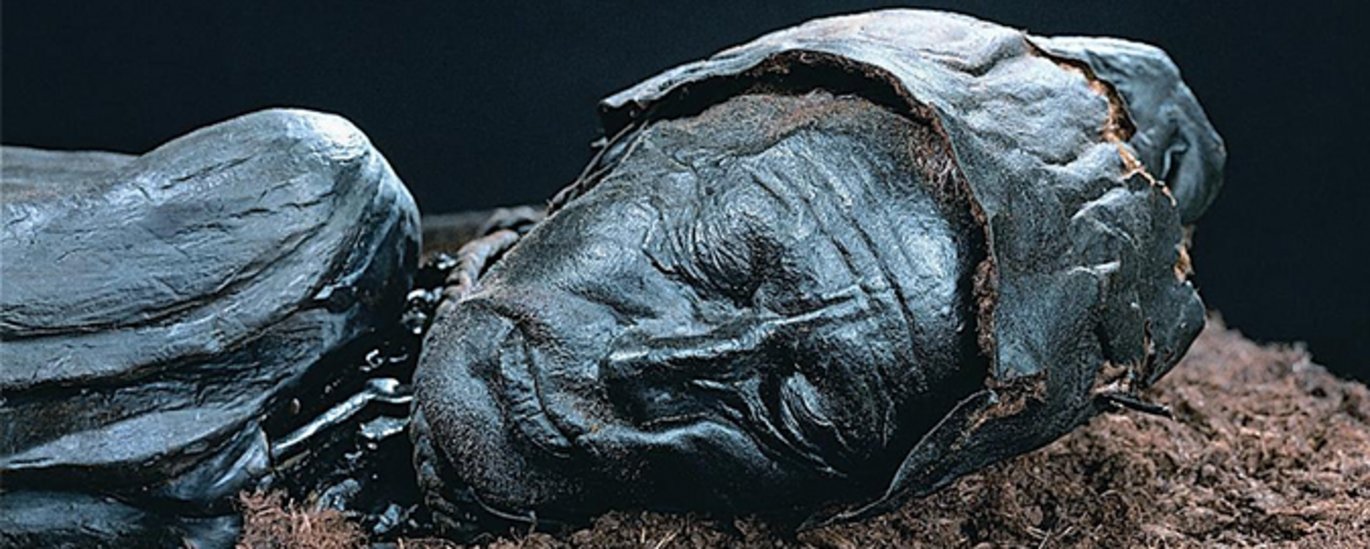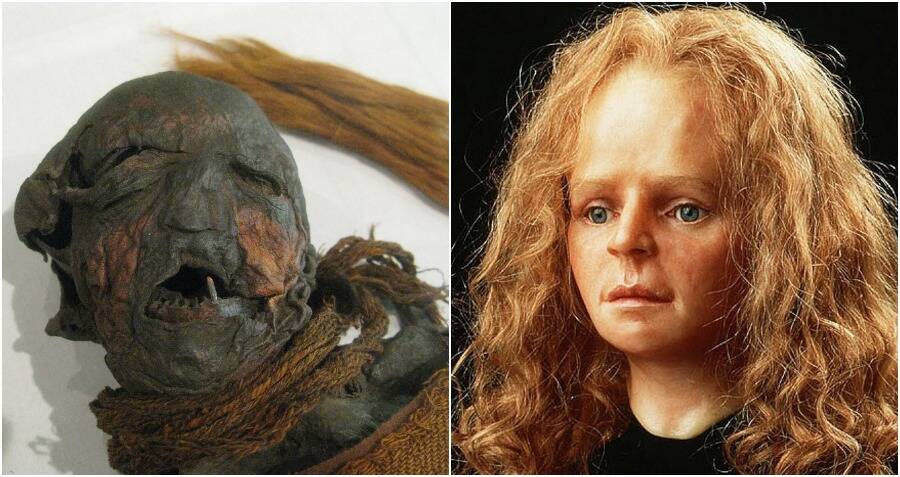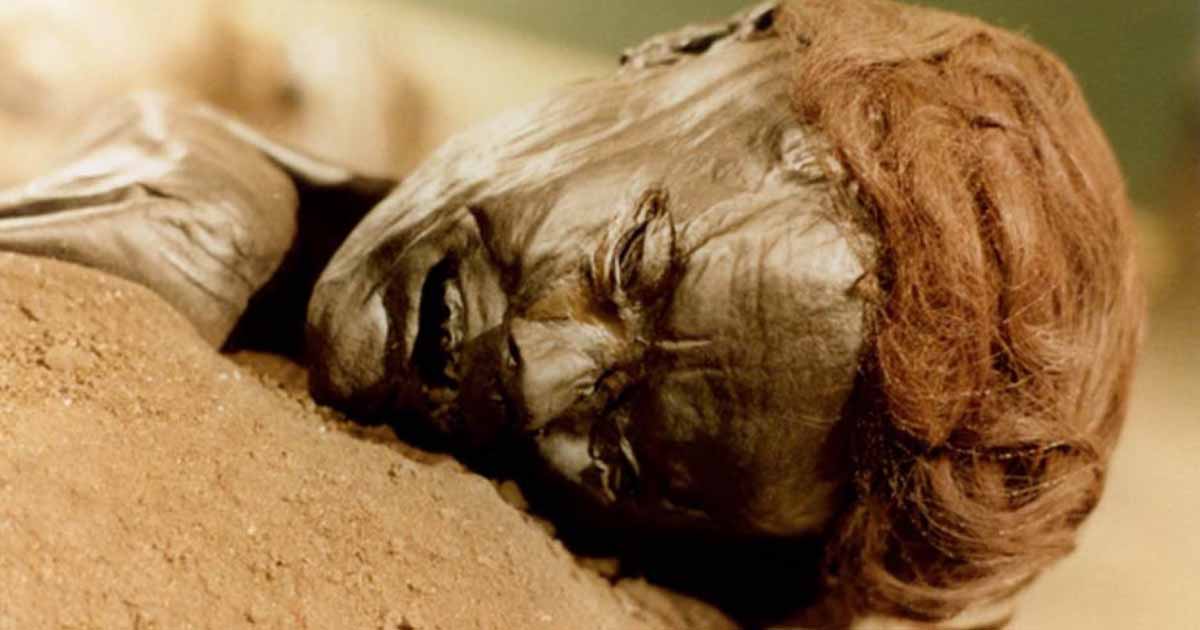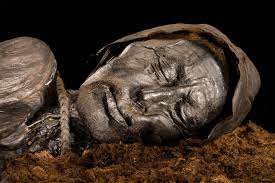On a spring Saturday in 1950, brothers Viggo and Emil Højgaard from the village of Tollund, Denmark, stumbled upon a dead man while cutting peat in a local bog. This discovery not only unraveled a murder case but also sparked numerous studies and led to the revelation of hundreds of ancient bog mummies.
The bogs are curious tombs
For centuries, the peat bogs scattered across Northern Europe have been a haunting repository of human remains, spanning back to the ancient era of 8,000 B.C. Among these eerie findings are the remarkably preserved bog bodies, echoing the story of Tollund Man. These bodies, from men to women, adults to children, and both highborn and humble, reveal a diverse tapestry of lives lost to the bog’s depths. What’s most unsettling is the manner of their demise—many appear to have met violent ends, carefully interred in the bog’s murky waters. This unsettling phenomenon has led scholars to speculate on the bogs’ dual role as both final resting places and enigmatic sites of ritualistic sacrifice and social exclusion.

The Most Terrifying Ancient Bog Mummy Cases
The bogs are enigmatic graves, capable of holding both revered and disgraced individuals: messengers to other realms, offerings to gods, and societal outcasts, including those morally questionable like adulterous spouses. Below are the most notable—and spine-chilling—cases.
Oldcroghan Man: A sacrificial king (350–175 B.C.)
In 2003, while clearing a drain in an Irish bog, excavators stumbled upon the remains of Oldcroghan Man. His demise, marked by violence, included fatal chest stabbings, disembowelment, and decapitation. Signs of struggle were evident, as indicated by wounds on his left forearm. His upper arms were pierced and bound with spancels, bands made of bark used for restraining livestock, indicating a ritualistic aspect to his death. Despite only a torso remaining, forensic experts estimated his towering stature at over 6’3” with muscular arms.

Speculations suggest he could have been a failed king, a contender for the throne, or a royal hostage sacrificed to a fertility deity. His well-maintained nails, unworn hands, and his last meal hint at high social standing. The ritual of cutting his nipples, possibly to disqualify him from kingship, reflects ancient customs of submission. In Irish mythology, kings mediated between realms and were sometimes sacrificed in elaborate rituals. Offerings, including yokes, cauldrons, and gold collars, found in bogs, symbolized kingship and sovereignty, underscoring the divine aspect of kingship.
Tollund Man: A ritual hanging (375–210 B.C.)

Upon first seeing Tollund Man, Glob perceived a serene expression on the dead man’s face, until noticing the leather noose around his neck. Further analysis revealed his distended tongue, indicating death by hanging. Despite the violent nature of his demise, Tollund Man appeared to have been carefully laid in the bog, with knees drawn up and eyes and mouth gently closed.
Scholars, including Glob, speculated that the 40-year-old Dane was a valuable sacrifice, possibly offered to gods for a prosperous harvest or in exchange for bog peat. Considering the cremation custom of the time, some experts suggested these sacrifices were left intact to serve deities, while others proposed they conveyed messages to the spirit world.
Yde Girl: A strangled adulteress (54 B.C.–128 A.D.)

Yde Girl’s discovery in the Netherlands in 1897 struck fear into the peatcutters, who fled, mistaking her long red hair for the devil. Subsequent analysis revealed her hair was originally blonde, turned fiery red by bog tannins. After a local newspaper report, archaeologists excavated her remains, determining she was a 16-year-old girl strangled with a woolen belt and stabbed above her left collarbone. CT scans uncovered scoliosis and a swollen, pigeon-toed right foot, suggesting physical deformities. However, her hair, sheared on one side and left long on the other, hints at a different story—medieval symbolism reserved for adulterous wives, raising the possibility of execution for infidelity.
Grauballe Man: A Ritualistic execution (290 B.C.–310 A.D.)

Before being interred in a bog in Denmark, Grauballe Man met a gruesome end. Discovered by peat cutters in 1952, examinations revealed he suffered a severe blow to the legs, forcing him to kneel before his assailants pulled his head back and slit his throat from ear to ear. Initial tests suggested a skull fracture, but later scans revealed a smooth indentation, likely post-mortem.
Unlike some bog bodies, Grauballe Man lacked signs of high status, hinting at a humble background. Evidence of malnutrition in his last meal and stress markers on his bones imply a difficult life. The presence of ergot, a hallucinogenic fungus, fueled debate over whether his death was a ritual sacrifice or a common murder. While some argue for ceremonial significance, others attribute his demise to the harsh realities of life in ancient times, questioning the role of hallucinogens in his fate.
The Legacy of the Bog Bodies
The bog bodies continue to fascinate and intrigue, inspiring generations of scholars, writers, and artists. From the psychological insights of Carl Jung to the poetic reflections of Seamus Heaney, these ancient relics offer a window into the human experience across millennia. As researchers delve deeper into the secrets of the bogs, they unravel the tangled threads of history, piecing together the stories of those who walked the earth long before us.

Unraveling the Tapestry of History
As we gaze upon the serene visage of Tollund Man and ponder the mysteries of the bog bodies, we are reminded of the interconnectedness of past and present. Each discovery adds another layer to the rich tapestry of human history, weaving a narrative that spans continents and centuries. The bog bodies stand as silent witnesses to the passage of time, their enigmatic presence beckoning us to delve deeper into the depths of antiquity.
